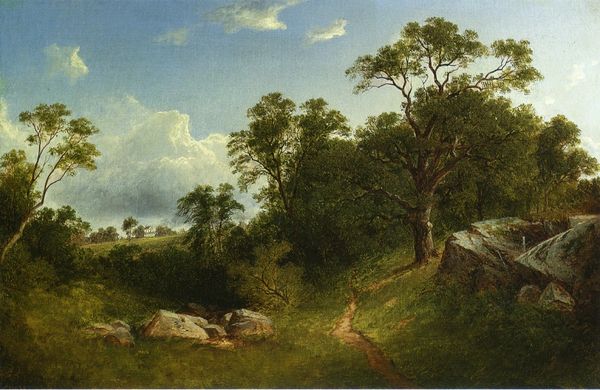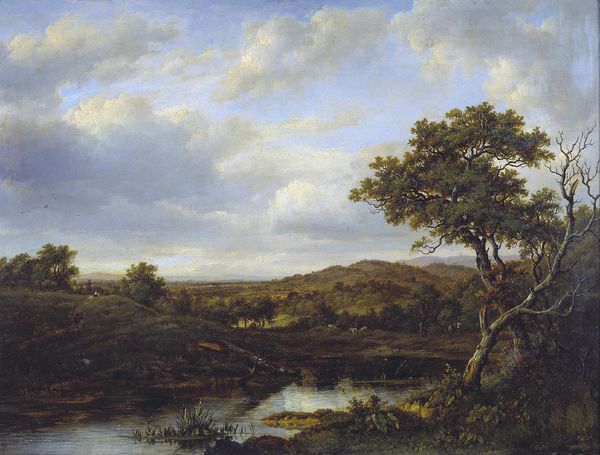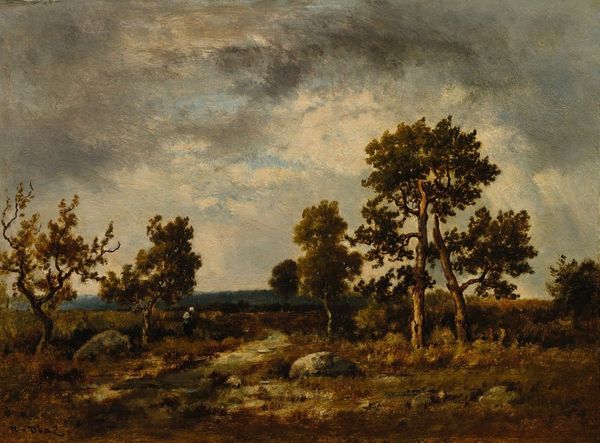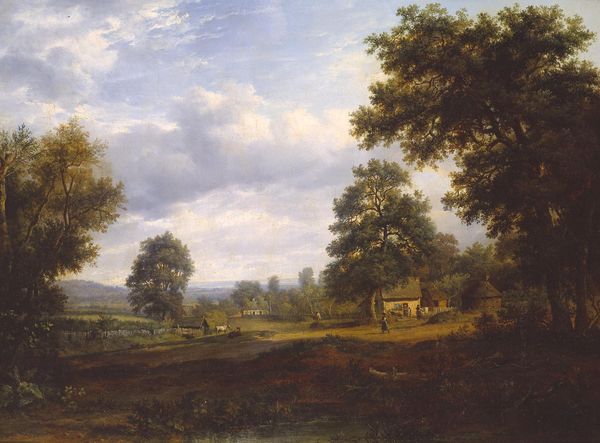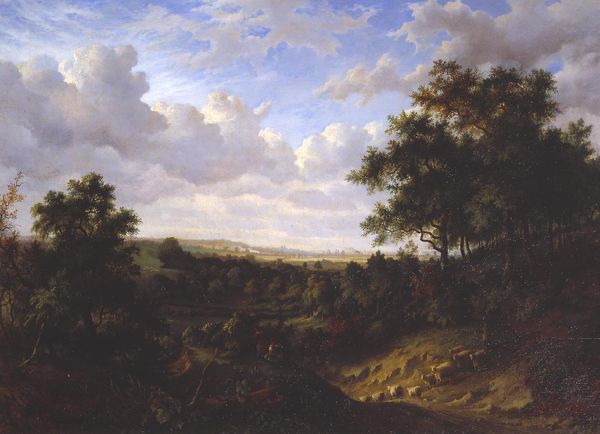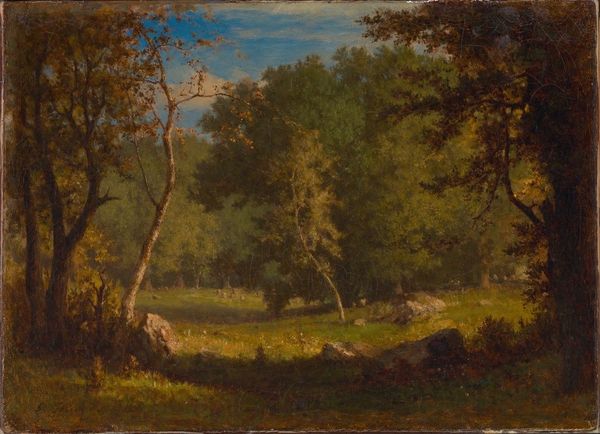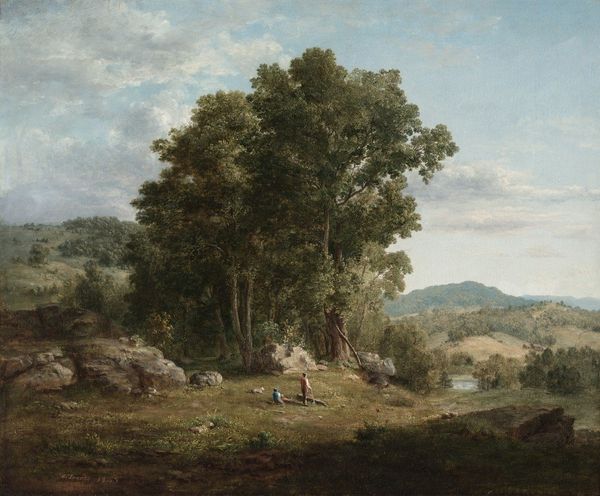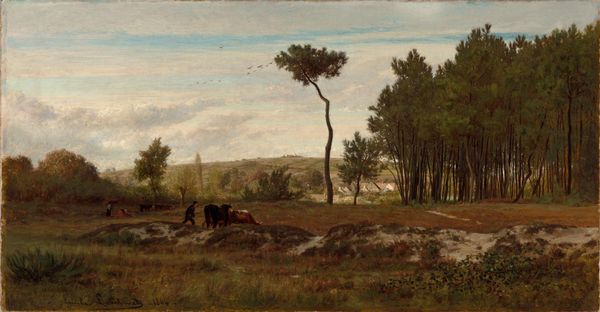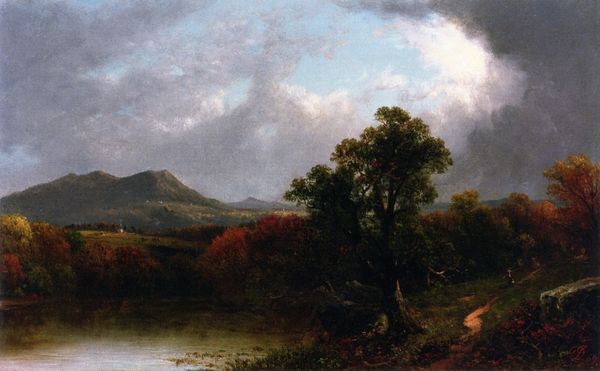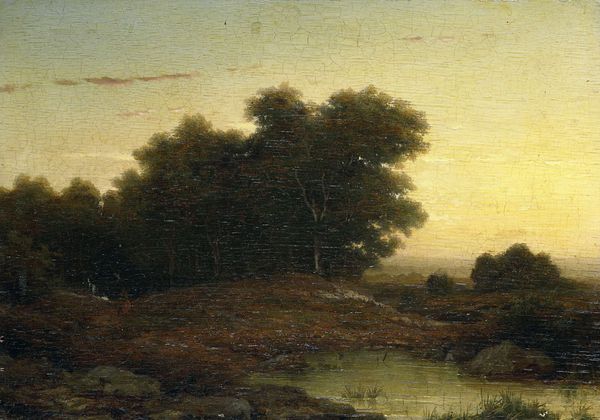
Copyright: Public domain
Editor: This is Carl Gustav Rodde's "A River Landscape at Sunset," painted in 1857 using oil paint in the plein-air style. It feels like a very quiet and peaceful scene. What do you see in this piece? Curator: I see a fascinating tension. We’re presented with a scene of pastoral tranquility, deeply rooted in the Hudson River School's romanticism, but let’s not forget this was painted on the eve of immense social and political upheaval in the United States. Consider the subjugation of indigenous people to acquire land for this very landscape, and the labor of enslaved Africans that contributed to the wealth of landowners. Can we truly appreciate the "peaceful" sunset without acknowledging the context of its creation and consumption? Editor: That’s a really interesting perspective, I hadn’t considered that at all. Does the "realism" tag apply? Curator: It does on the surface. However, the “realism” here serves a very specific agenda. The idealized portrayal of nature obscures the socio-political realities underpinning it. This is more than just a painting of a sunset; it's a statement—albeit a subtle one—about power, land ownership, and who gets to experience and represent this landscape. Who do you imagine is *not* included in this scene? Editor: I see your point. The exclusion of certain people speaks volumes. I initially just saw the beautiful colours, but now I'm questioning who benefits from that beauty. Curator: Exactly! By interrogating the narratives of these paintings, we can begin to understand the complex and often troubling relationship between art, history, and social justice. This picture gives rise to many questions.
Comments
No comments
Be the first to comment and join the conversation on the ultimate creative platform.
